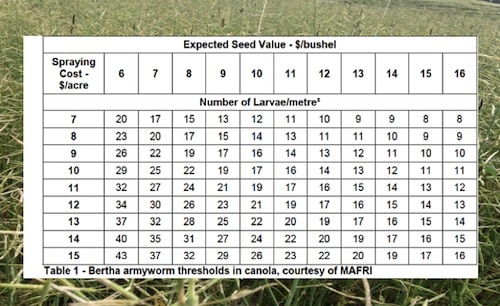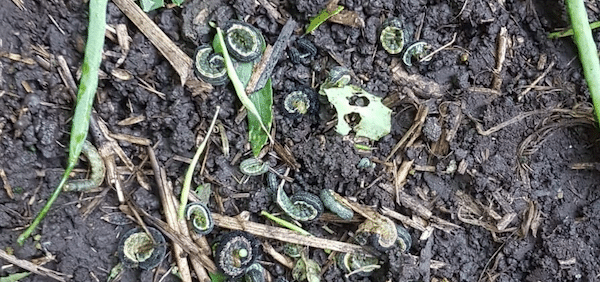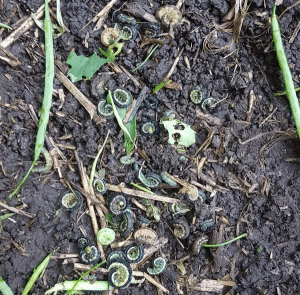Bertha armyworm numbers are at thresholds in more Peace-region canola fields this week. Growers in the Birch Hills, Saddle Hills and Northern Sunrise areas in particular are encouraged to scout. The Peace was an identified risk area, according to Alberta moth counts for 2019, but some of these regions had lower adult counts.
How can outbreaks occur in areas with low moth counts? Bertha armyworm moths are very mobile, so they will select ideal locations to lay eggs. This could result in one field, or even patches within a field, being preferable over others for egg laying. Noctuid family moths commonly lay eggs in select areas and that is why cutworms often are in patches. Bertha armyworm is in the noctuid family. As a result – despite good coverage with the bertha armyworm monitoring, which excels at picking up larger outbreaks – small pockets of bertha armyworm do pop up occasionally. That is why all fields should get a scout. (While out there, check for diseases and weed escapes).
Scouting tips
Bertha armyworms do most of their feeding at night, so for daytime scouting, look on the ground and under debris to get an accurate count. You may find some worms feeding on leaves and pods during the day, but the greater number could be somewhat hidden.
To scout:
- Mark out an area a quarter-metre square (50 cm by 50 cm) and beat the plants growing within that area to dislodge any larvae that may remain on the plants. Count the larvae on the ground and multiply by 4 to get the number per metre square. Larvae will hide under leaf litter and in cracks, so check closely. Picking leaf litter away, then waiting quietly a minute or so makes it much easier to count larvae as they begin to move again.
- Sample at least 5 locations (10-15 is recommended) a minimum of 50 metres apart. Do not sample headlands and areas within the crop that are not representative of the field. Use the average number of larvae at the sites surveyed to determine if the economic threshold has been exceeded.
- Scout each field. Adjacent fields may have very different larval densities, depending on how attractive the crop was to the moths when laying their eggs.
- READ MORE on scouting and thresholds in the Canola Encyclopedia.
If counts are close to threshold (see table below), keep looking. As Alberta Ag entomologist Scott Meers says, “If the action level is 20 per square metre and you find 17, look more closely to make sure you’re right.”
Take the bertha armyworm quiz for more on bertha identification and scouting.


